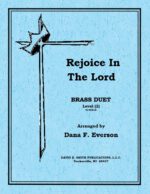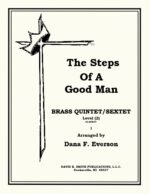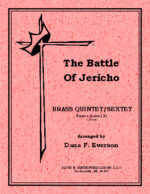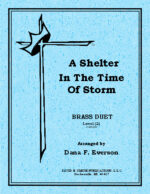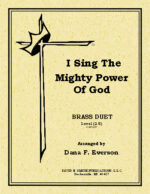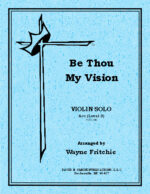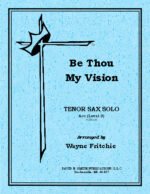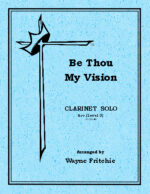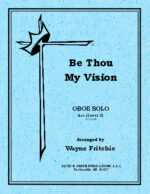-
How Can I Fear
$14.95Eighteen piano solos- easy-to-read type and spiral bound… Wings as Eagles, How Can I Fear, Amazing Grace, He Lives, Sweet Hour of Prayer and more…
-
-
The Steps Of A Good Man
$12.00This quintet (opt. Sextet) begins in a plaintive fashion with block harmonic structure in the upper voices. The lower voices respond in like fashion and then the two segments of the ensemble join forces to produce a lush ensemble. The next section is essentially like the earlier one.
-
We’re Marching To Zion
$11.00A traditional woodwind quintet with opt. Alto sax and bass clarinet parts. The pieces is constantly effervescent with delightful embellishing devices. The ending section is slower and expressive exhibiting a sense of confidence.
-
Battle Of Jericho, The
$12.00A traditional brass quintet instrumentation with optional sixth part baritone, this piece changes colors as the melody is passed between the various voices. The walls even fall down at the end.
-
And Can It Be
$6.00This duet is scored for trumpet, trombone, and piano with optional horn and baritone parts. The melody is passed back and forth between the two duet lines and modulates between several keys, giving over to a stirring ending.
-
Savior, Like A Shepherd Lead Us
$9.00Scored for trumpet, horn, trombone and piano with optional parts for trumpet and baritone the piece moves along in a rather unpretentious manner with thematic material passed around between the brass voices.The piece settles down in to a final rest.
-
Shelter In The Time Of Storm, A
$5.00Scored for trumpet, trombone (opt. Horn and baritone) with piano the piece starts with a simple duet line where it departs to more imitative and contrapuntal lines only to end with the simple duet writing.
-
I Sing The Mighty Power Of God
$5.50A brass duet for trumpet, trombone (opt. Horn) and piano which presents itself in a manner where both instrumentalist state the theme and have some contrapuntal dialog as well. It is an easier piece both has interest for the performer and listener.
-
Springs Of Living Water
$9.00A unaccompanied flute quartet with optional fourth part clarinet. The introduction begins with a “bubbling” motive which leads into the tune stated in the lower voices with responses interspersed in the upper voices. After a short flourish the melodic material resurfaces like the beginning. A modulated interlude is tossed about leading into a another modulation with extraneous motives. And yet, another modulation where the melody is more staid until it leads into another modulation which acts as a coda concluding with a celebratory flourish.
-
Be Thou My Vision
$4.50This solo is presented in a gentle, pastorale fashion migrating to a delightful obligato passage in the middle of the work. After a brief cadenza it settles into a hushed Adagio giving a sense of final rest.
-
Be Thou My Vision
$4.50This solo is presented in a gentle, pastorale fashion migrating to a delightful obligato passage in the middle of the work. After a brief cadenza it settles into a hushed Adagio giving a sense of final rest.
-
Be Thou My Vision
$4.50This solo is presented in a gentle, pastorale fashion migrating to a delightful obligato passage in the middle of the work. After a brief cadenza it settles into a hushed Adagio giving a sense of final rest.
-
Be Thou My Vision
$4.50This solo is presented in a gentle, pastorale fashion migrating to a delightful obligato passage in the middle of the work. After a brief cadenza it settles into a hushed Adagio giving a sense of final rest.
-
Be Thou My Vision
$4.50This solo is presented in a gentle, pastorale fashion migrating to a delightful obligato passage in the middle of the work. After a brief cadenza it settles into a hushed Adagio giving a sense of final rest.


